Search Result
Results for "
spider
" in MedChemExpress (MCE) Product Catalog:
1
Biochemical Assay Reagents
| Cat. No. |
Product Name |
Target |
Research Areas |
Chemical Structure |
-
- HY-D1878
-
|
|
Fluorescent Dye
|
Cancer
|
|
SPiDER-βGal-1 is a potent probe for β-galactosidase activity and suitable for labeling live cells in culture .
|
-
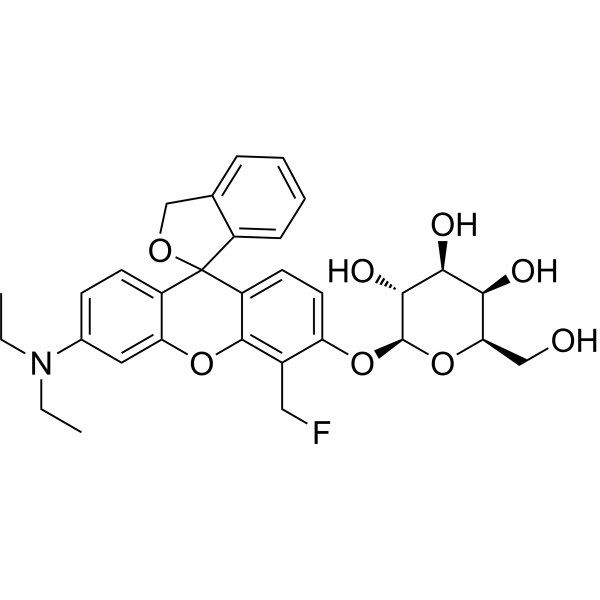
-
- HY-D1879
-
|
|
Fluorescent Dye
|
Cancer
|
|
SPiDER-βGal-2 is a potent probe for β-galactosidase activity and suitable for labeling live cells in culture .
|
-
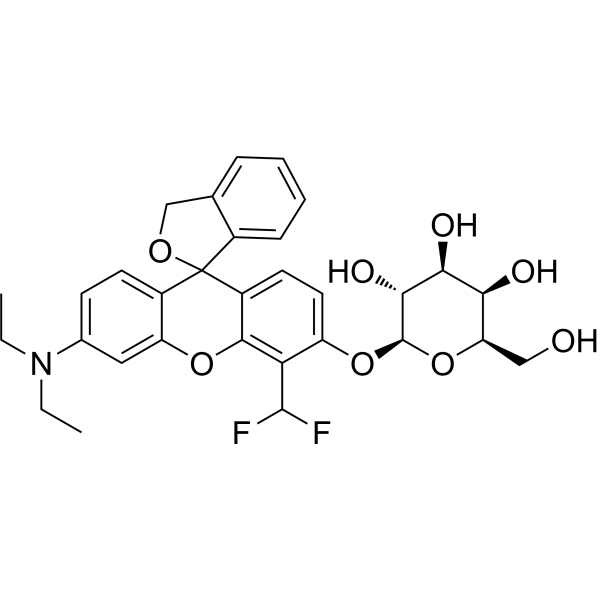
-
- HY-P5162
-
|
|
Sodium Channel
|
Inflammation/Immunology
|
|
Dc1a potently promotes opening of the German cockroach Nav channel (BgNav1). Dc1a is a toxin can be isolated from the desert bush spider Diguetia canities .
|
-

-
- HY-P5142
-
|
ω-ACTX-Hv1; ω-Atracotoxin-HV1
|
Calcium Channel
|
Neurological Disease
|
|
ω-Hexatoxin-Hv1a is a neurotoxin that can be isolated from the venom spider (Hadronyche versuta).ω-Hexatoxin-Hv1a blocks voltage-gated calcium channels .
|
-
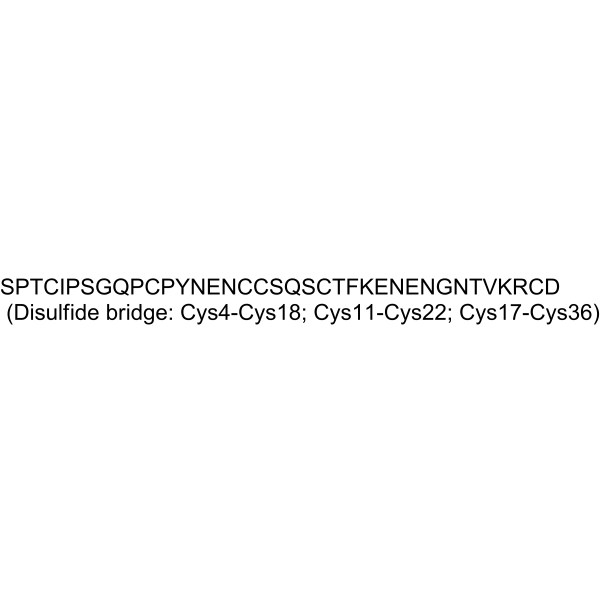
-
- HY-P3655
-
|
|
Calcium Channel
|
Others
|
|
Agelenin is a polypeptide composed of 35 amino acids. Agelenin could be isolated from the Agelenidae spider Agelena opulenta. Agelenin has structural similarity to insect-specific calcium channel inhibitor .
|
-

-
- HY-P2699
-
|
GrTx; ω-GsTx SIA
|
Calcium Channel
|
Neurological Disease
|
|
ω-Grammotoxin SIA (GrTx) is P/Q and N-type voltage-gated Calcium channels inhibitor. ω-Grammotoxin SIA is also a protein toxin that can be obtained from spider venom. ω-Grammotoxin SIA has the potential to study neurological diseases as well as cardiovascular diseases .
|
-

-
- HY-P5786
-
-

-
- HY-P5790
-
|
|
Sodium Channel
|
Neurological Disease
|
|
μ-TRTX-Hd1a, a spider venom, is a selective NaV 1.7 inhibitor. μ-TRTX-Hd1a is a gating modifier that inhibits human NaV 1.7 by interacting with the S3b-S4 paddle motif in channel domain II .
|
-

-
- HY-129642
-
|
|
Others
|
Others
|
|
Hirsutide is a cyclic tetrapeptide that can be found in spider-derived entomopathogenic fungus .
|
-
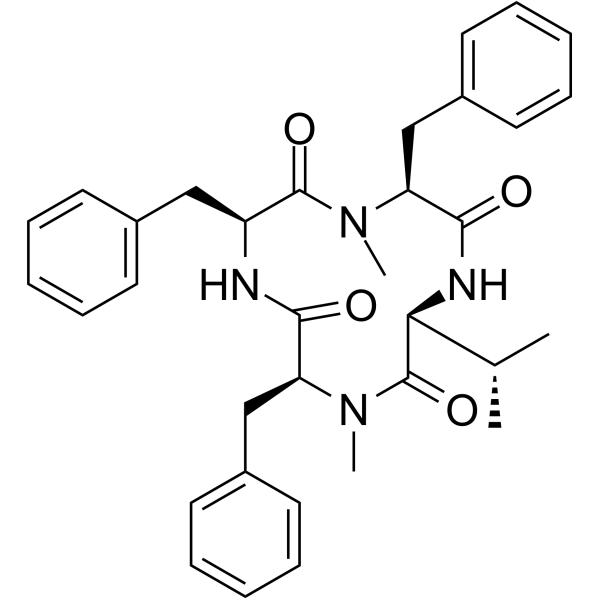
-
- HY-116511
-
|
|
Parasite
|
Infection
|
|
Benzoximate is an acaricide that inhibits fruit tree red spider mite Panonychys ulmi (Koch) .
|
-
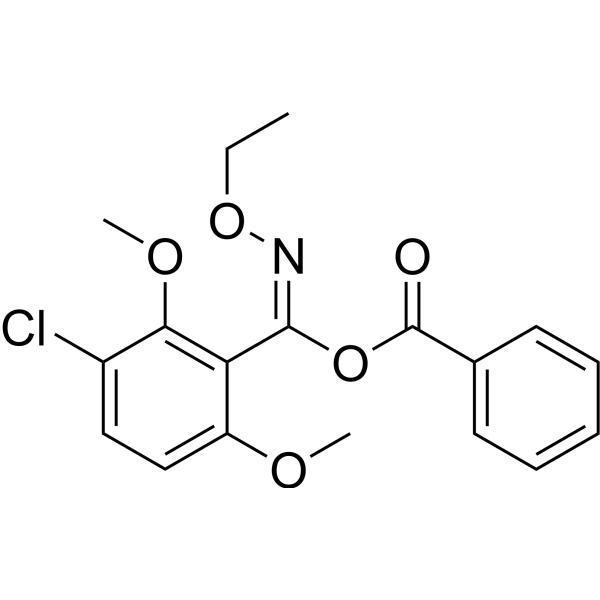
-
- HY-P2785
-
-

-
- HY-12506A
-
|
1-Naphthylacetyl spermine trihydrochloride
|
iGluR
|
Neurological Disease
|
|
Naspm trihydrochloride (1-Naphthylacetyl spermine trihydrochloride), a synthetic analogue of Joro spider toxin, is a calcium permeable AMPA (CP-AMPA) receptors antagonist.
|
-
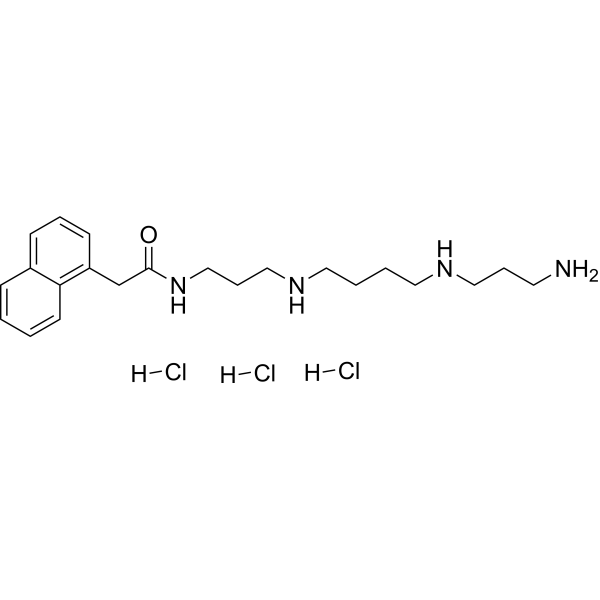
-
- HY-12506
-
|
1-Naphthylacetyl spermine
|
iGluR
|
Neurological Disease
|
|
Naspm (1-Naphthyl acetyl spermine), a synthetic analogue of Joro spider toxin, is a calcium permeable AMPA (CP-AMPA) receptors antagonist.
|
-

-
- HY-W059342
-
|
YI-5301
|
Biochemical Assay Reagents
|
Infection
|
|
Etoxazole (YI-5301) is an organofluorine insecticide widely used in agriculture. Etoxazole affects the nymphs, eggs, and larvae of spider mites by inhibiting chitin biosynthesis .
|
-
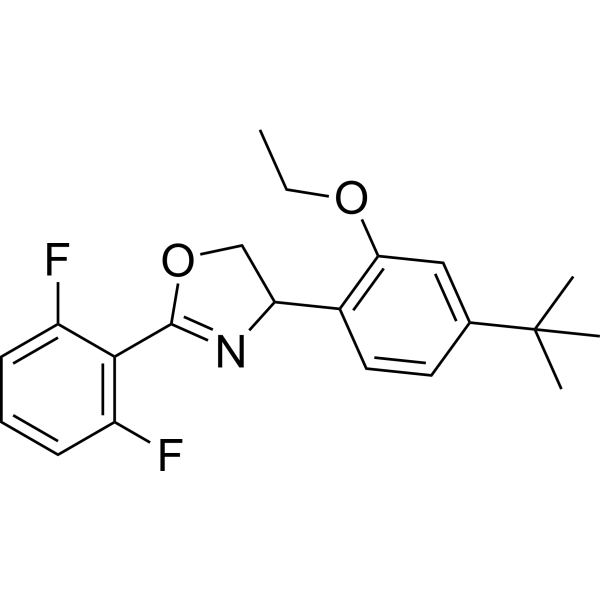
-
- HY-P2785A
-
-
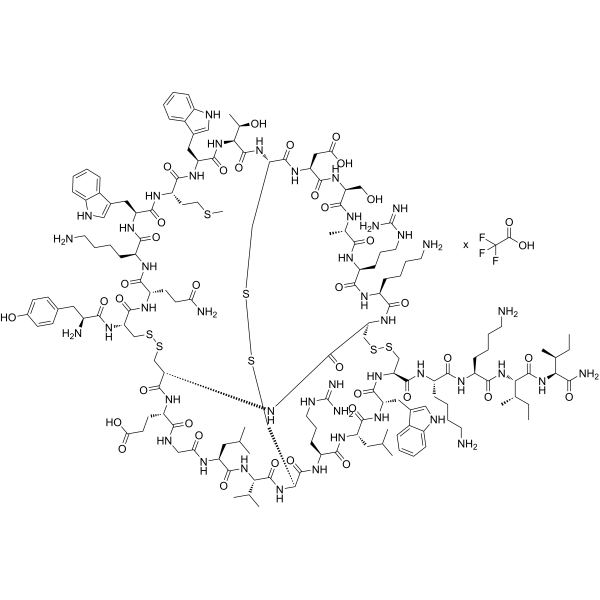
-
- HY-P5183
-
|
|
Sodium Channel
|
Neurological Disease
|
|
Hm1a is a disulfide-rich spider-venom peptide, and a NaV1.1 activator. Hm1a restores the function of inhibitory interneurons in Dravet syndrome (DS) mouse model .
|
-

-
- HY-P1330
-
|
|
P2X Receptor
|
Inflammation/Immunology
|
|
Purotoxin 1 is a P2X3 receptor inhibitor. Purotoxin 1 shows antinociceptive properties in animal models of inflammatory pain. Purotoxin 1 can be isolated from the venom of the wolf spider Geolycosa sp .
|
-
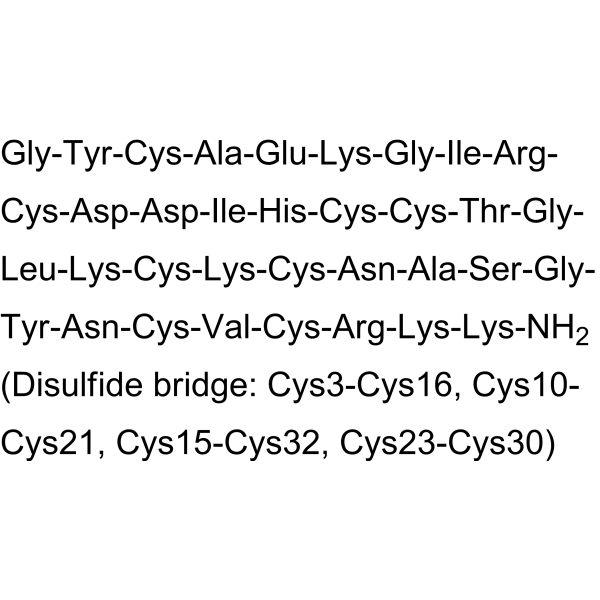
-
- HY-P1074
-
|
|
Calcium Channel
|
Neurological Disease
|
|
SNX-482, a peptidyl toxin of the spider Hysterocrates gigas, is a potent, high affinity, selective and voltage-dependent R-type CaV2.3 channel blocker with an IC50 of 30 nM. SNX-482 has antinociceptive effect .
|
-
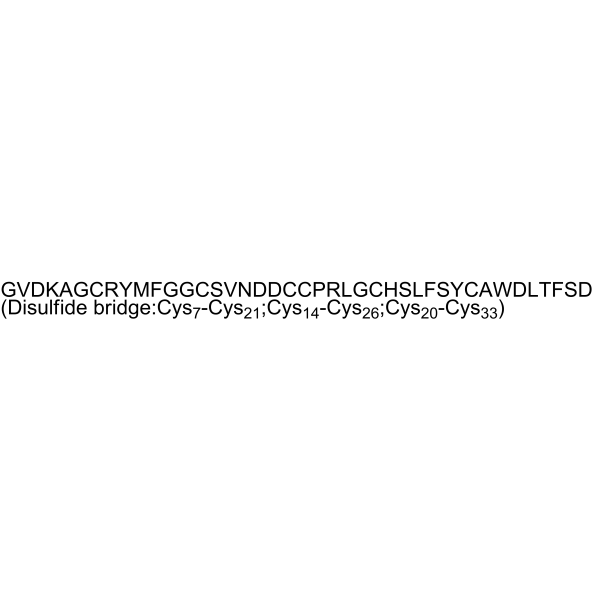
-
- HY-P5865
-
|
Theraphotoxin-Tap1a; TRTX-Tap1a; µ/ω-TRTX-Tap1a
|
Sodium Channel
|
Neurological Disease
|
|
Tap1a (Theraphotoxin-Tap1a) is a spider venom peptide that inhibits sodium channels with IC50s of 80 nM and 301 nM against Nav1.7 and Nav1.1, respectively. Tap1a shows analgesic effects .
|
-
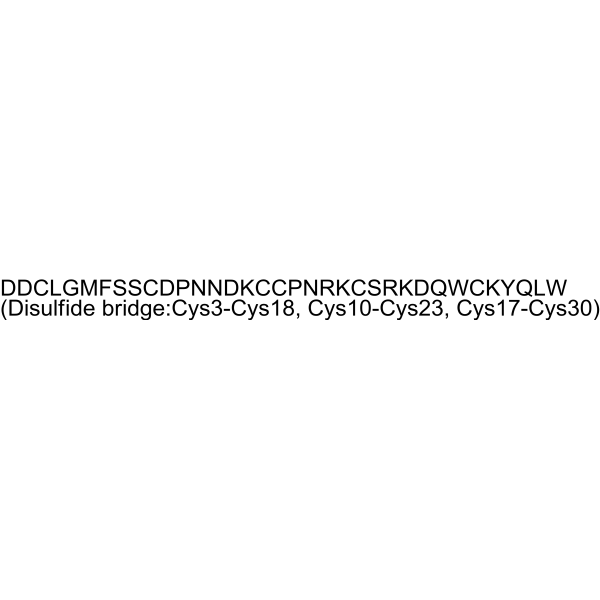
-
- HY-P1410B
-
-
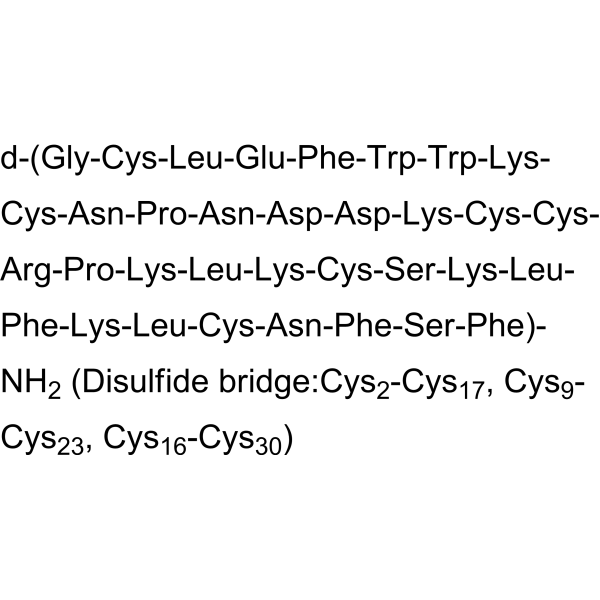
-
- HY-P5160
-
|
PhlTx1
|
Sodium Channel
|
Inflammation/Immunology
|
|
Phlotoxin-1 (PhlTx1) is a 34-amino acid and 3-disulfide bridge peptide. Phlotoxin-1 can be isolated from Phlogiellus genus spider. Phlotoxin-1 is an antinociceptive agent by inhibiting NaV1.7 channel .
|
-

-
- HY-P1410C
-
-
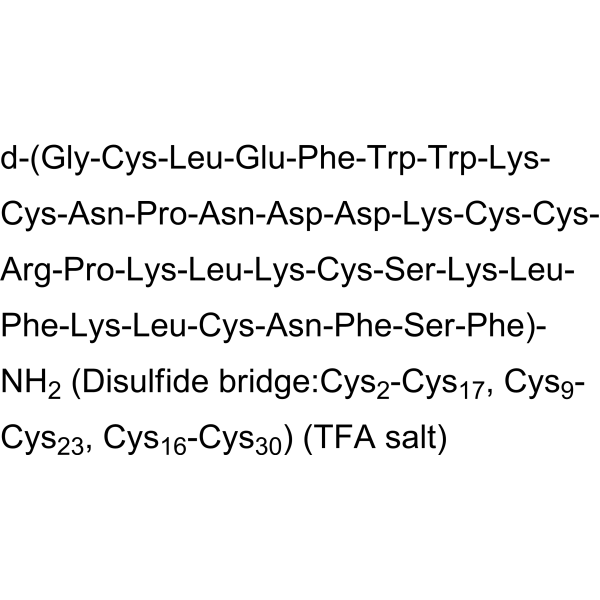
-
- HY-P5770
-
|
|
Sodium Channel
|
Neurological Disease
|
|
Jingzhaotoxin-V, a 29-residue polypeptide, is derived from the venom of the spider Chilobrachys jingzhao. Jingzhaotoxin-V inhibits tetrodotoxin-resistant and tetrodotoxin-sensitive sodium currents in rat dorsal root ganglion neurons with IC50 values of 27.6 nM and 30.2 nM, respectively. Jingzhaotoxin-V also inhibits Kv4.2 potassium currents expressed in Xenpus Laevis oocytes (IC50 of 604.2 nM) .
|
-

-
- HY-P1410
-
GsMTx4
Maximum Cited Publications
32 Publications Verification
|
TRP Channel
Piezo Channel
|
Cardiovascular Disease
Neurological Disease
Inflammation/Immunology
|
|
GsMTx4 is a spider venom peptide that selectively inhibits cationic-permeable mechanosensitive channels (MSCs) belonging to the Piezo and TRP channel families. GsMTx4 also blocks cation-selective stretch-activated channels (SACs) , attenuates lysophosphatidylcholine (LPC)-induced astrocyte toxicity and microglial reactivity. GsMTx4 is an important pharmacological tool for identifying the role of these excitatory MSCs in normal physiology and pathology .
|
-
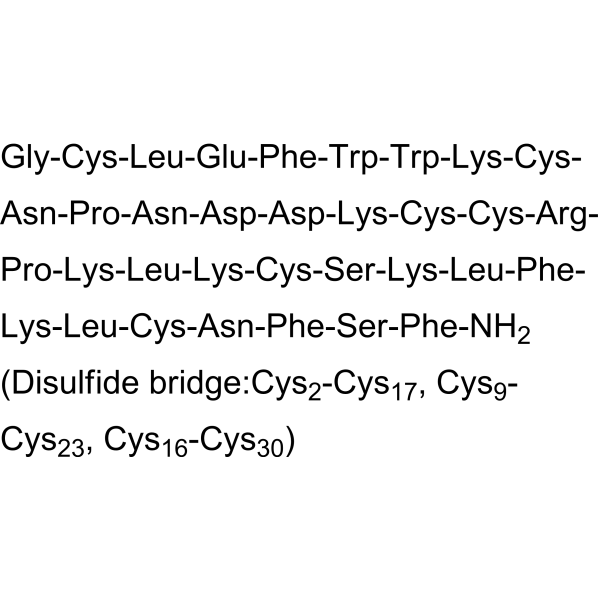
-
- HY-P1410A
-
GsMTx4 TFA
Maximum Cited Publications
32 Publications Verification
|
TRP Channel
Piezo Channel
|
Cardiovascular Disease
Neurological Disease
Inflammation/Immunology
|
|
GsMTx4 TFA is a spider venom peptide that selectively inhibits cationic-permeable mechanosensitive channels (MSCs) belonging to the Piezo and TRP channel families. GsMTx4 TFA also blocks cation-selective stretch-activated channels (SACs) , attenuates lysophosphatidylcholine (LPC)-induced astrocyte toxicity and microglial reactivity. GsMTx4 TFA is an important pharmacological tool for identifying the role of these excitatory MSCs in normal physiology and pathology .
|
-
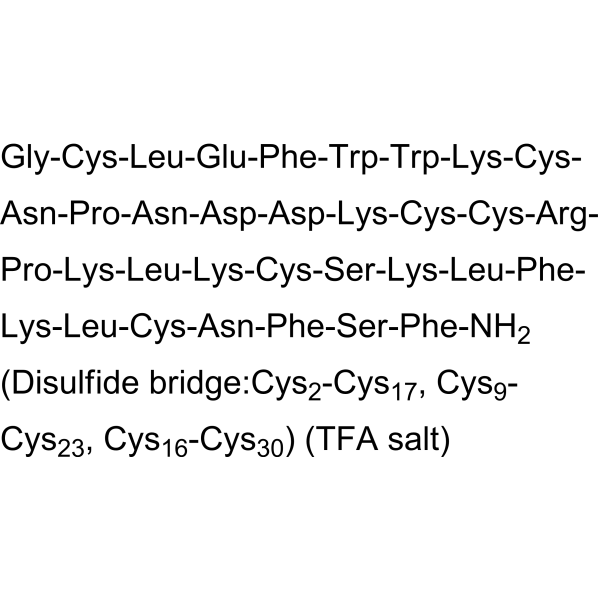
-
- HY-P5153
-
|
μ-TRTX-Tp1a
|
Sodium Channel
|
Neurological Disease
|
|
ProTx-III is a selective and potent inhibitor of voltage-gated sodium channel Nav1.7, with an IC50 of 2.1 nM. ProTx-III is a spider venom peptide isolated from the venom of the Peruvian green velvet tarantella. ProTx-III has a typical inhibitor cystine knot motif (ICK). ProTx-III is able to reverse the pain response. ProTx-III can be used to study diseases such as chronic pain, epilepsy, and arrhythmia .
|
-

-
- HY-P1411A
-
|
PcTx1 TFA; Psalmopoeus cambridgei toxin-1 TFA
|
Sodium Channel
Apoptosis
|
Neurological Disease
Cancer
|
|
Psalmotoxin 1 (PcTx1) TFA is a protein toxin that can bind at subunit-subunit interfaces of acid-sensing ion channel 1a (ASIC1a). Psalmotoxin 1 TFA is a potent and slective ASIC1a inhibitor (IC50: 0.9 nM) by increasing the apparent affinity for H + of ASIC1a. Psalmotoxin 1 TFA can induce cell apoptosis, also inhibits cell migration, proferliration and invasion of cancer cells. Psalmotoxin 1 TFA can be used in the research of cancers, or neurological disease .
|
-

-
- HY-P1411
-
|
PcTx1; Psalmopoeus cambridgei toxin-1
|
Sodium Channel
Apoptosis
|
Neurological Disease
Cancer
|
|
Psalmotoxin 1 (PcTx1) is a protein toxin that can bind at subunit-subunit interfaces of acid-sensing ion channel 1a (ASIC1a). Psalmotoxin 1 is a potent and slective ASIC1a inhibitor (IC50: 0.9 nM) by increasing the apparent affinity for H + of ASIC1a. Psalmotoxin 1 can induce cell apoptosis, also inhibits cell migration, proferliration and invasion of cancer cells. Psalmotoxin 1 can be used in the research of cancers, or neurological disease .
|
-

-
- HY-P5164
-
|
|
Sodium Channel
|
Neurological Disease
|
|
GrTx1 is a peptide toxin originally isolated from the venom of the spider Grammostola rosea. GrTx1 blocks sodium channel, with IC50s of 0.63 µM, 0.23 µM, 0.77 µM, 1.29 µM, 0.63 µM and 0.37 µM for Nav1.1, Nav1.2, Nav1.3, Nav1.4, Nav1.6 and Nav1.7, repectively .GrTx1 can be used for neurological disease research .
|
-

-
- HY-100821
-
|
|
Bacterial
|
Infection
|
|
2,4-Dihydroxyphenylacetylasparagine is a potent and selective antagonist of glutamate. 2,4-Dihydroxyphenylacetylasparagine inhibits glutamate binding to rat brain synaptic membranes .
|
-
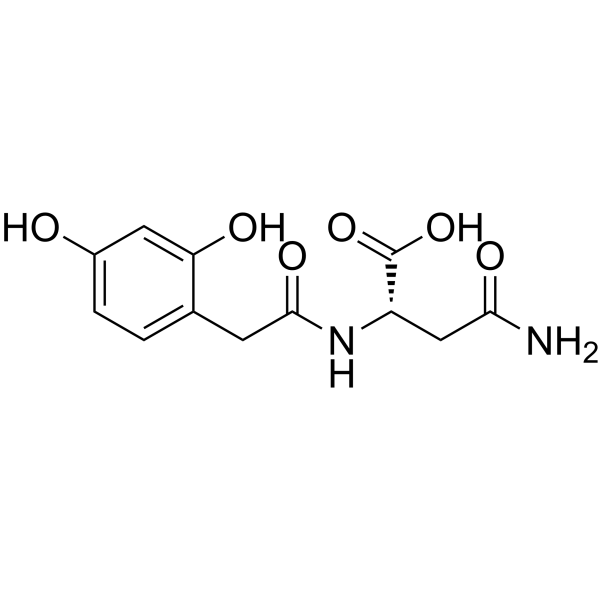
| Cat. No. |
Product Name |
Type |
| Cat. No. |
Product Name |
Type |
-
- HY-W059342
-
|
YI-5301
|
Biochemical Assay Reagents
|
|
Etoxazole (YI-5301) is an organofluorine insecticide widely used in agriculture. Etoxazole affects the nymphs, eggs, and larvae of spider mites by inhibiting chitin biosynthesis .
|
| Cat. No. |
Product Name |
Target |
Research Area |
-
- HY-P5162
-
|
|
Sodium Channel
|
Inflammation/Immunology
|
|
Dc1a potently promotes opening of the German cockroach Nav channel (BgNav1). Dc1a is a toxin can be isolated from the desert bush spider Diguetia canities .
|
-
- HY-P5142
-
|
ω-ACTX-Hv1; ω-Atracotoxin-HV1
|
Calcium Channel
|
Neurological Disease
|
|
ω-Hexatoxin-Hv1a is a neurotoxin that can be isolated from the venom spider (Hadronyche versuta).ω-Hexatoxin-Hv1a blocks voltage-gated calcium channels .
|
-
- HY-P3655
-
|
|
Calcium Channel
|
Others
|
|
Agelenin is a polypeptide composed of 35 amino acids. Agelenin could be isolated from the Agelenidae spider Agelena opulenta. Agelenin has structural similarity to insect-specific calcium channel inhibitor .
|
-
- HY-P2699
-
|
GrTx; ω-GsTx SIA
|
Calcium Channel
|
Neurological Disease
|
|
ω-Grammotoxin SIA (GrTx) is P/Q and N-type voltage-gated Calcium channels inhibitor. ω-Grammotoxin SIA is also a protein toxin that can be obtained from spider venom. ω-Grammotoxin SIA has the potential to study neurological diseases as well as cardiovascular diseases .
|
-
- HY-P5786
-
-
- HY-P5790
-
|
|
Sodium Channel
|
Neurological Disease
|
|
μ-TRTX-Hd1a, a spider venom, is a selective NaV 1.7 inhibitor. μ-TRTX-Hd1a is a gating modifier that inhibits human NaV 1.7 by interacting with the S3b-S4 paddle motif in channel domain II .
|
-
- HY-P2785
-
-
- HY-P3095
-
|
|
Peptides
|
Neurological Disease
|
|
α-Latrotoxin, a potent neurotoxin from black widow spider venom, triggers synaptic vesicle exocytosis from presynaptic nerve terminals .
|
-
- HY-P4525
-
|
|
Peptides
|
Others
|
|
Ala-Ala-Ala-Ala is a poly-L-alanine (PLA) sequences. PLA is a kind of key element of the crystalline domains of spider dragline and wild silkworm silks .
|
-
- HY-P2785A
-
-
- HY-P5183
-
|
|
Sodium Channel
|
Neurological Disease
|
|
Hm1a is a disulfide-rich spider-venom peptide, and a NaV1.1 activator. Hm1a restores the function of inhibitory interneurons in Dravet syndrome (DS) mouse model .
|
-
- HY-P5167
-
|
|
Peptides
|
Inflammation/Immunology
|
|
GsAF-1 is a peptide toxin containing three disulfide bonds. GsAF-1 can be isolated from the venom of the Chilean pink tarantula. GsAF-1 can be used for research of moderate-to-severe pain .
|
-
- HY-P1330
-
|
|
P2X Receptor
|
Inflammation/Immunology
|
|
Purotoxin 1 is a P2X3 receptor inhibitor. Purotoxin 1 shows antinociceptive properties in animal models of inflammatory pain. Purotoxin 1 can be isolated from the venom of the wolf spider Geolycosa sp .
|
-
- HY-P1074
-
|
|
Calcium Channel
|
Neurological Disease
|
|
SNX-482, a peptidyl toxin of the spider Hysterocrates gigas, is a potent, high affinity, selective and voltage-dependent R-type CaV2.3 channel blocker with an IC50 of 30 nM. SNX-482 has antinociceptive effect .
|
-
- HY-P5865
-
|
Theraphotoxin-Tap1a; TRTX-Tap1a; µ/ω-TRTX-Tap1a
|
Sodium Channel
|
Neurological Disease
|
|
Tap1a (Theraphotoxin-Tap1a) is a spider venom peptide that inhibits sodium channels with IC50s of 80 nM and 301 nM against Nav1.7 and Nav1.1, respectively. Tap1a shows analgesic effects .
|
-
- HY-P1410B
-
-
- HY-P5160
-
|
PhlTx1
|
Sodium Channel
|
Inflammation/Immunology
|
|
Phlotoxin-1 (PhlTx1) is a 34-amino acid and 3-disulfide bridge peptide. Phlotoxin-1 can be isolated from Phlogiellus genus spider. Phlotoxin-1 is an antinociceptive agent by inhibiting NaV1.7 channel .
|
-
- HY-P1410C
-
-
- HY-P5770
-
|
|
Sodium Channel
|
Neurological Disease
|
|
Jingzhaotoxin-V, a 29-residue polypeptide, is derived from the venom of the spider Chilobrachys jingzhao. Jingzhaotoxin-V inhibits tetrodotoxin-resistant and tetrodotoxin-sensitive sodium currents in rat dorsal root ganglion neurons with IC50 values of 27.6 nM and 30.2 nM, respectively. Jingzhaotoxin-V also inhibits Kv4.2 potassium currents expressed in Xenpus Laevis oocytes (IC50 of 604.2 nM) .
|
-
- HY-P1410
-
GsMTx4
Maximum Cited Publications
32 Publications Verification
|
TRP Channel
Piezo Channel
|
Cardiovascular Disease
Neurological Disease
Inflammation/Immunology
|
|
GsMTx4 is a spider venom peptide that selectively inhibits cationic-permeable mechanosensitive channels (MSCs) belonging to the Piezo and TRP channel families. GsMTx4 also blocks cation-selective stretch-activated channels (SACs) , attenuates lysophosphatidylcholine (LPC)-induced astrocyte toxicity and microglial reactivity. GsMTx4 is an important pharmacological tool for identifying the role of these excitatory MSCs in normal physiology and pathology .
|
-
- HY-P5813
-
|
β-TRTX-cd1a; β-Theraphotoxin-cd1a
|
Peptides
|
Neurological Disease
|
|
Cd1a is a β-toxin derived from the African spider Ceratogyrus darlingi. Cd1a can regulate calcium ion channels. Cd1a inhibits human calcium ion channels (Cav2.2)(IC502.6 μM) and mouse sodium ion channels (Nav1.7). Cd1a can be used in the development of peripheral pain treatment drugs .
|
-
- HY-P1410A
-
GsMTx4 TFA
Maximum Cited Publications
32 Publications Verification
|
TRP Channel
Piezo Channel
|
Cardiovascular Disease
Neurological Disease
Inflammation/Immunology
|
|
GsMTx4 TFA is a spider venom peptide that selectively inhibits cationic-permeable mechanosensitive channels (MSCs) belonging to the Piezo and TRP channel families. GsMTx4 TFA also blocks cation-selective stretch-activated channels (SACs) , attenuates lysophosphatidylcholine (LPC)-induced astrocyte toxicity and microglial reactivity. GsMTx4 TFA is an important pharmacological tool for identifying the role of these excitatory MSCs in normal physiology and pathology .
|
-
- HY-P5153
-
|
μ-TRTX-Tp1a
|
Sodium Channel
|
Neurological Disease
|
|
ProTx-III is a selective and potent inhibitor of voltage-gated sodium channel Nav1.7, with an IC50 of 2.1 nM. ProTx-III is a spider venom peptide isolated from the venom of the Peruvian green velvet tarantella. ProTx-III has a typical inhibitor cystine knot motif (ICK). ProTx-III is able to reverse the pain response. ProTx-III can be used to study diseases such as chronic pain, epilepsy, and arrhythmia .
|
-
- HY-P1411A
-
|
PcTx1 TFA; Psalmopoeus cambridgei toxin-1 TFA
|
Sodium Channel
Apoptosis
|
Neurological Disease
Cancer
|
|
Psalmotoxin 1 (PcTx1) TFA is a protein toxin that can bind at subunit-subunit interfaces of acid-sensing ion channel 1a (ASIC1a). Psalmotoxin 1 TFA is a potent and slective ASIC1a inhibitor (IC50: 0.9 nM) by increasing the apparent affinity for H + of ASIC1a. Psalmotoxin 1 TFA can induce cell apoptosis, also inhibits cell migration, proferliration and invasion of cancer cells. Psalmotoxin 1 TFA can be used in the research of cancers, or neurological disease .
|
-
- HY-P1411
-
|
PcTx1; Psalmopoeus cambridgei toxin-1
|
Sodium Channel
Apoptosis
|
Neurological Disease
Cancer
|
|
Psalmotoxin 1 (PcTx1) is a protein toxin that can bind at subunit-subunit interfaces of acid-sensing ion channel 1a (ASIC1a). Psalmotoxin 1 is a potent and slective ASIC1a inhibitor (IC50: 0.9 nM) by increasing the apparent affinity for H + of ASIC1a. Psalmotoxin 1 can induce cell apoptosis, also inhibits cell migration, proferliration and invasion of cancer cells. Psalmotoxin 1 can be used in the research of cancers, or neurological disease .
|
-
- HY-P5164
-
|
|
Sodium Channel
|
Neurological Disease
|
|
GrTx1 is a peptide toxin originally isolated from the venom of the spider Grammostola rosea. GrTx1 blocks sodium channel, with IC50s of 0.63 µM, 0.23 µM, 0.77 µM, 1.29 µM, 0.63 µM and 0.37 µM for Nav1.1, Nav1.2, Nav1.3, Nav1.4, Nav1.6 and Nav1.7, repectively .GrTx1 can be used for neurological disease research .
|
| Cat. No. |
Product Name |
Category |
Target |
Chemical Structure |
Your information is safe with us. * Required Fields.
Inquiry Information
- Product Name:
- Cat. No.:
- Quantity:
- MCE Japan Authorized Agent:






































